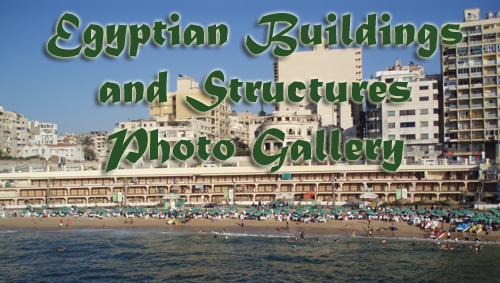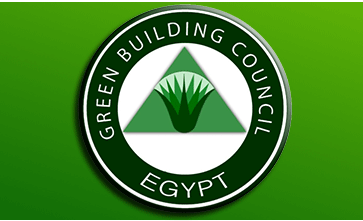
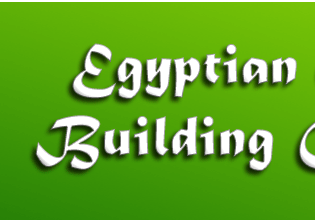

- Establishment
- Green Pyramid Rating System
- Eco-Village
- Affordable Green Housing
- Building Inspection
- Publicity
- Gallery
Establishment of Egyptian Green Building Council: In January 2009, a major step was taken by establishing the Egyptian Green Building Council (EGBC). Membership in the EGBC consists of both national and international personalities including government ministers from Cabinet level agencies, officers from respected NGOs, prominent businessmen, seasoned labor leaders, and major contractors. One of the objectives for establishing this council is to provide a mechanism to encourage building investors to adopt BEECs as well as other sections of existing codes that satisfy both energy efficiency and environmental conservation. By focusing on new construction, the EGBC could use its leverage as a professional organization to educate and convince engineers, builders, contractors and owners about the benefits of green construction to the individual, to the community, to the nation and most significantly to the bottom line. In this manner, green construction would be the desired goal for all new building projects and building energy efficiency codes would be the materials, tools and road map to achieve the desired goal. In that sense, the primary motivation was to eliminate any stigma or clichéd perspectives associated with green construction and, instead, present green construction as a financially logical and appropriate course of action that integrates important global and national concerns to produce viable sustainable products that meet the short term and long term needs of people. As an immediate action to activate the role of this council was the approval of developing a national Green Building Rating System called the Green Pyramid Rating System (GPRS), the council has commissioned to define the framework of a rating system and a national committee has been formed to review and ultimately approve the Green Pyramid Rating System, which is expected to be completed and in place by the end of 2009 or the first quarter of 2010. Recognizing the unique ecological, industrial and social challenges of the region, the rating system will help to define what constitutes an “Egyptian Green Building”. To accomplish that goal, the rating system will build upon the Egyptian BEECs and integrate proven methodologies and techniques used in successful programs from the United States, Europe, Asia, South America and the Middle East. |
 |
The initial response by the Construction Industry to establishing a Green Pyramid Rating System and awarding Green Permits was overwhelmingly positive for several reasons including the development of logical and valuable incentive system that would encourage compliance and reward efficiency. Some of the EGBC proposed incentives related to a Green Buildings Certification include:
|
 |
The Eco-villages National Project: As a second achievement for the EGBC, a proposal for building the first Eco-Village in Egypt was approved by the Minister of Housing, Utilities and Urban Communities. The Eco-Village will be constructed according to Green Principles, Green Building Regulations and the existing BEECs. Currently a site South of Cairo has been selected. The design and planning of the structure has been assigned to the HBRC. The motivation for Eco-Village is the understanding that Egypt faces a critical situation with its homeless population and that sustainable standards of living for this community may be beyond the scope of the current free market-driven economic system in Egypt. At the same time, the increasing homeless population will have a direct effect on the economy, security and social solidarity of the nation. In that sense, the goal of the Eco-Villages national project is to provide a platform for sustainable technologies, systems, methodologies and techniques that will be used to develop safe communities where homeless citizens can regain their place in the Egyptian society, make positive contributions to their lives and indirectly improve the welfare of the nation. Within this sustainable model, the proposed Eco-village is expected to deliver to its community members guaranteed health care, basic education, religious guidance, effective social assimilation, work training, and skill development, In return the community will produce food, energy, and the output of numerous cooperative enterprises. As a bonus, the participants experience the responsibility of property ownership and the benefits of self-sufficient communities and self-reliant individuals. The Venn diagram of Figure (1) attempts to integrate ownership with production and consumption, where the intersection represents all that is used to sustain the local development.
 |
Figure (1): Sustainable Triad for Eco-Village. A proposed initial development calls for the utilization of suitable rural-urban area to establish a sustainable “perma-culture” that is founded on an agro-industrial base. In this way, the eco-village will be founded on an agricultural-industrial engine that will integrate human activity with natural surroundings to produce market quality foods, goods and products, while maintaining a sustainable standard of living. |
National Affordable Non-Conventional Housing Project: In 2008, a major pilot project was entrusted to the HBRC to explore the possibility of introducing an energy efficient, environmentally friendly Housing System for low income families. The same group who initiated the GUPC was selected to lead the project. This group assured the council that BEEC would be integrated into the design and development of the New Housing Project, which would use energy efficient materials and support. As such, a primary criterion for the selection of a New System has been compliance with BEEC and the rating system under development. Since the “new system” will be the backbone of numerous proposed large scale public developments, it will be relied upon to satisfy strict energy, social and aesthetic requirements. For this reason, it will act as a driver for private, government and individual construction. Not surprisingly, numerous product manufacturers have stepped forward to herald their products and numerous developers have stepped forward to define their visions of communities that utilize these systems. As a result, the exercise is bringing together architects, urban planners, engineers and manufacturers to forge a green vision that maximizes LEED certifications, satisfies building efficiencies requirements and lays the foundation for sustainable communities. Current examples include proposals for low income housing in 6th of October City as seen in Figures (2) through (4). All of these projects seek to provide quality low and middle income housing within large sustainable and fully integrated communities that optimize efficiency, comfort and volume. The final developments will create an integrated community that includes hospitals, clinics, stores, malls, cinemas, clubs, mosques and schools.
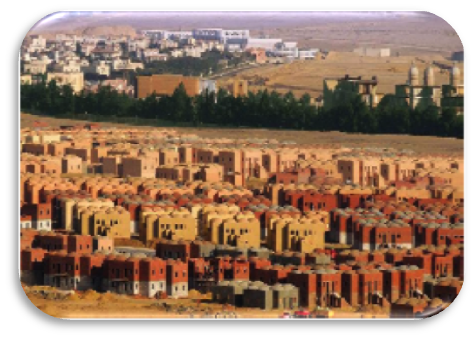 Low Income Housing |
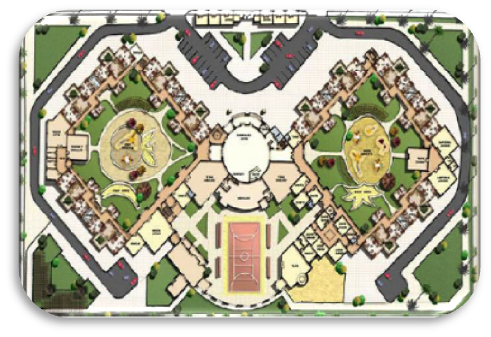 Optimized Communities |
 Competition for Green Systems and Developments associated with the National Affordable Non Conventional Housing Project |
|
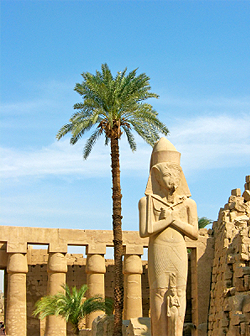 |
ICC HBRC Building Inspector Program: In 2004, a memorandum of understanding was been signed between the Ministry of Housing Utilities and Urban Communities (MHUUC) with both the International Code Council of the USA (ICC) and the International Accreditation Service (IAS) to develop a national program to train licensed Special Technical Inspectors. The new program, modeled after ICC's training and certification programs in the U.S., begins with initial certification levels for structural concrete, fire protection, plumbing and mechanical inspection. This new collaboration will be coordinated with additional research and technical support from HBRC, with a goal if bringing technological innovation and insight from the laboratory to the job site. The demand for new green housing in Egypt is enormous, while the availability of competent technical professionals is limited. For this reason, new general inspectors will be in great demand and will have a major role in enforcing BEECs and other established building codes as well as supporting the Green Building Rating System. More significantly, the certification process will add competent professionals to the workforce; give individuals the opportunity to distinguish themselves and stand out in a particular field; and improve the general knowledge and awareness of green principles in the building community. A newly certified inspector will be on the frontlines in the battle for compliance, enforcement and energy efficiency in Egypt. He or she will have increased earning and career advancement potential and will be entrusted with protecting public health, safety and welfare. The significance of the last statement should not be dismissed. Properly trained Inspectors should place the public's welfare above all other interests; demonstrate integrity, honesty and fairness in all transactions; recognize the continuing need for developing improved safety; maintain professional competence in all areas of employment; accept no personal favors for public services rendered and conscientiously avoid all circumstances that could compromise professional integrity. If these ideals are maintained then the foundation for a Green Egypt will have been secured. |
Development of the World Bank (WB) Report on Implementation of Building Energy Efficiency Code in Egypt: A comprehensive WB report is being developed that provide in-depth information on different aspects of building energy codes and environmentalissues related to the building industry in Egypt. Publicity and Outreach: The following efforts were performed by the EGBC to spread the word on the council and to raise the awareness for green building approach:
|
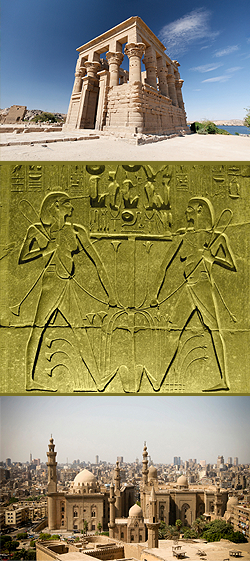 |



